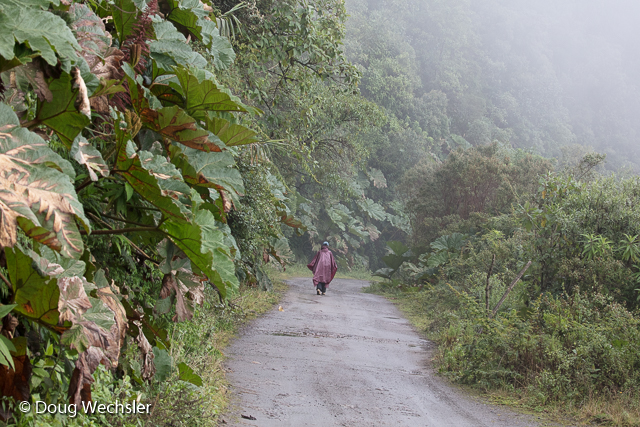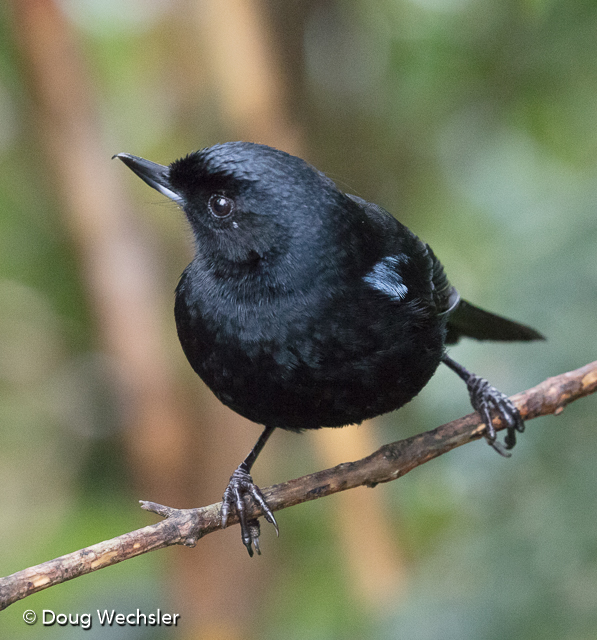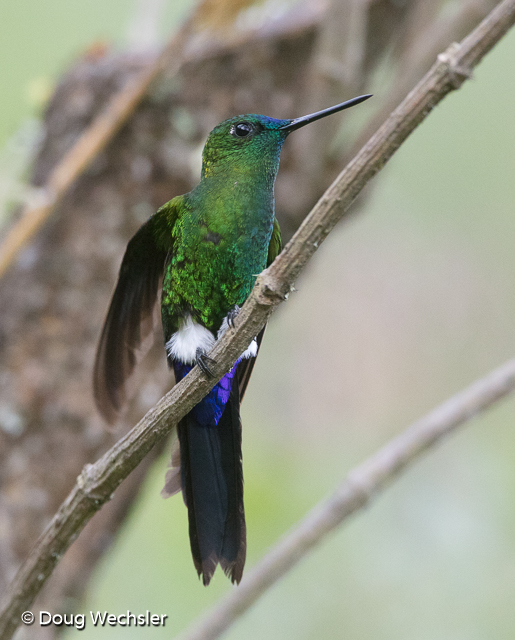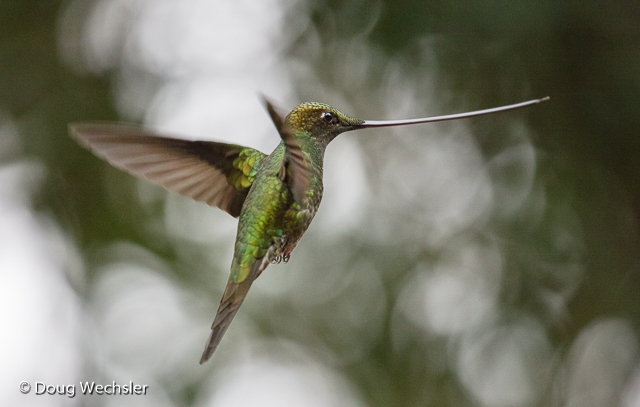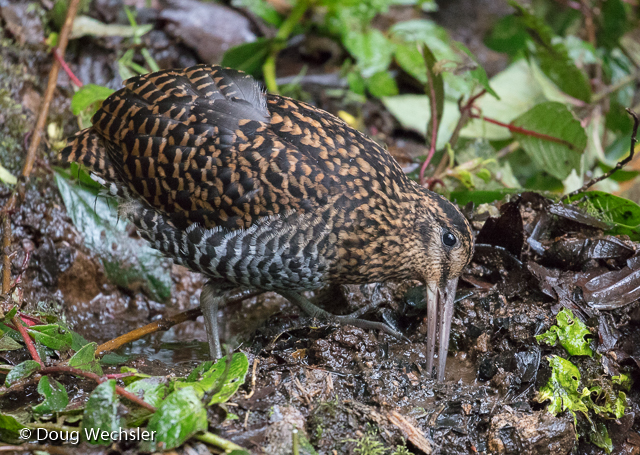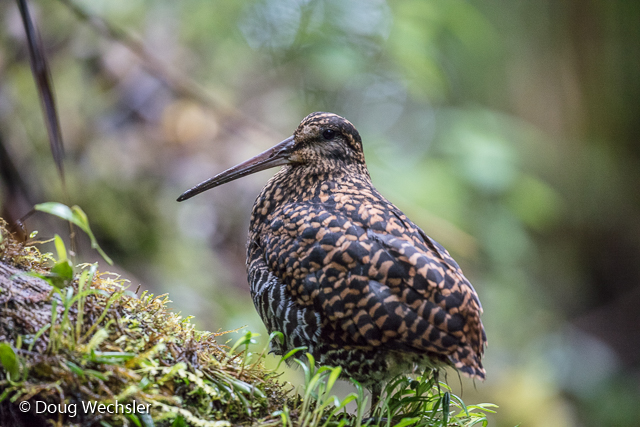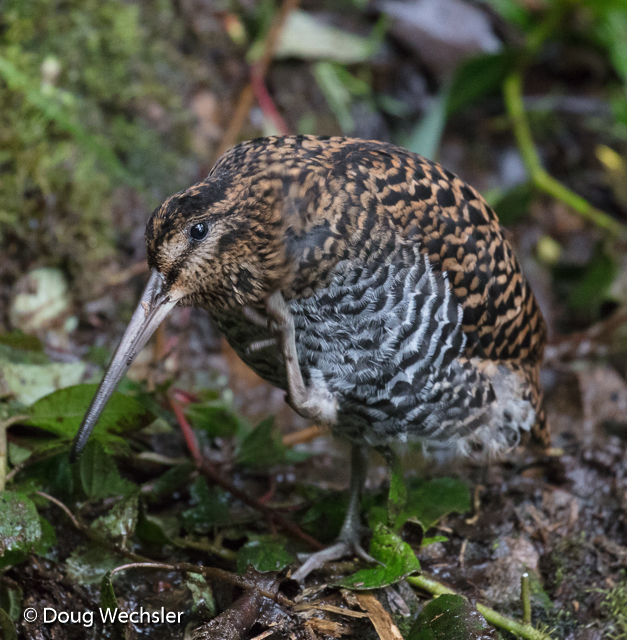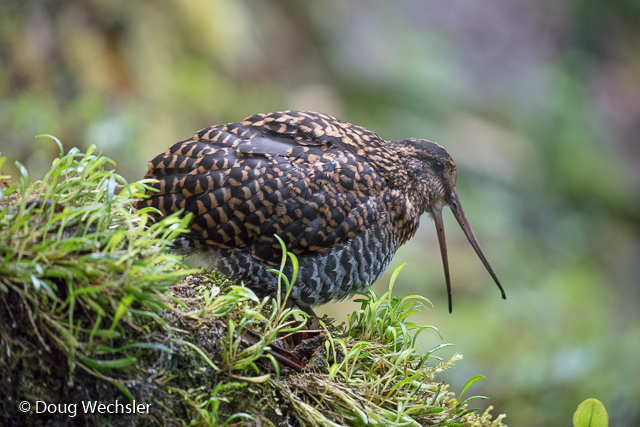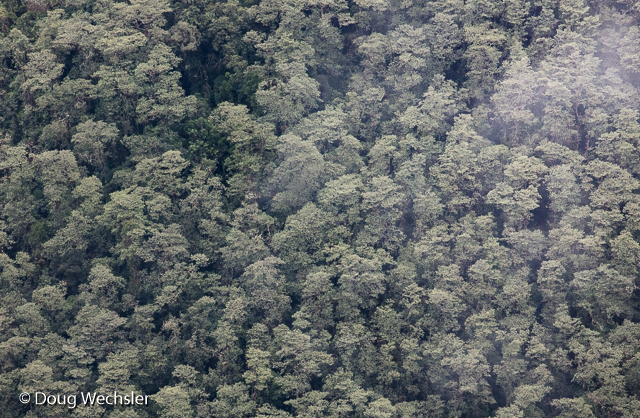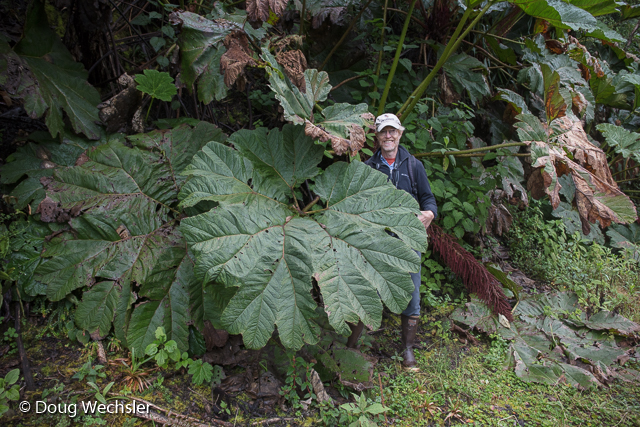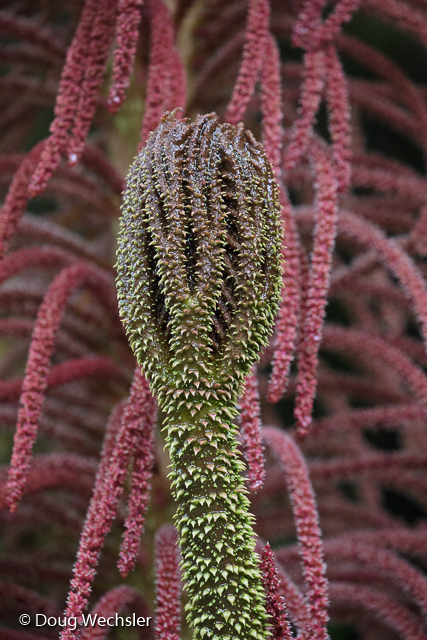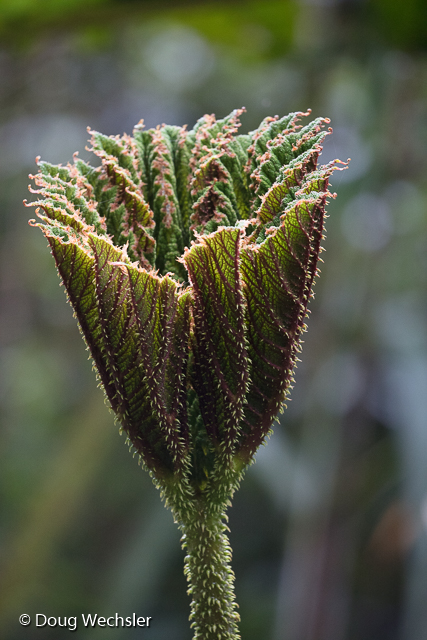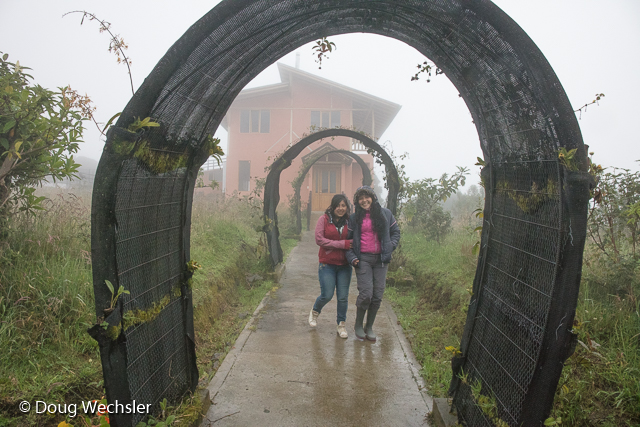Sitting high above Quito, Ecuador, Yanacocha Reserve is a convenient place to visit a temperate Andean forest. Being so close to Ecuador’s capital, Yanacocha is the Jocotoco Conservation Foundation’s most visited reserve.
Since clouds frequently envelope this forest, epiphytes (plants that grow on other plants without harming them) abound.
For us flatlanders who visit for only a couple of days, climbing hills at 3,200 m (10,500 ft) can literally be a breathtaking experience. Fortunately, the main trail though the reserve, the Trocha Inca, is a flat and easy hike.
Nectar-eating birds are the most conspicuous birds at Yanacocha. One group, the flowerpiercers, cheat flowers by using their hooked beak to pierce the base of the corolla (flower tube). In an instant they drink the nectar without touching the pollen. Consequently, the flower gets nothing out of the deal.
More than 30 species of hummingbirds inhabit the reserve, though only about one third of them regularly use the feeders. The beautiful vent of the Sapphire-vented Puffleg can be hard to see behind its bright white booties.
Perhaps the most common species at the feeders is the Buff-winged Starfrontlet.
With a beak longer in proportion to its body length than any other bird, the Sword-billed Hummingbird can gain exclusive access to long tubular flower such as certain passionflowers.
The Imperial Snipe is a difficult bird to see, but Yanacocha is one of the best places to find one. It inhabits Polylepis forest and wet paramo (high elevation Andean grassland). It is most reliably found at dawn and dusk when it calls during its display flight, but we were lucky to find it during the day in the forest.
Don’t worry; they don’t bite.
Just outside the reserve we flushed this Short-eared Owl.
Forests of Polylepis grow at high elevation in many parts of the Andes. Unfortunately they have been severely depleted over much of their range.
Another typical plant of the high Andes, Gunnera, is noteworthy for it huge leaves.
As the young leaves expand, they take on some amazing forms.
>
Jocotoco Conservation Foundation has built a beautiful interpretive center at Yanacocha Reserve with engaging displays. A cozy cafeteria sits on top of the center. The center is particularly busy on weekends since it is just a 45-minute drive from Quito.
This ends my Jocotoco posts for the season. Many thanks to all of the employees and board members of Jocotoco Conservation Foundation and Jocotours for making our work possible and enjoyable. And thanks to you readers for vicariously coming along on the adventure.


